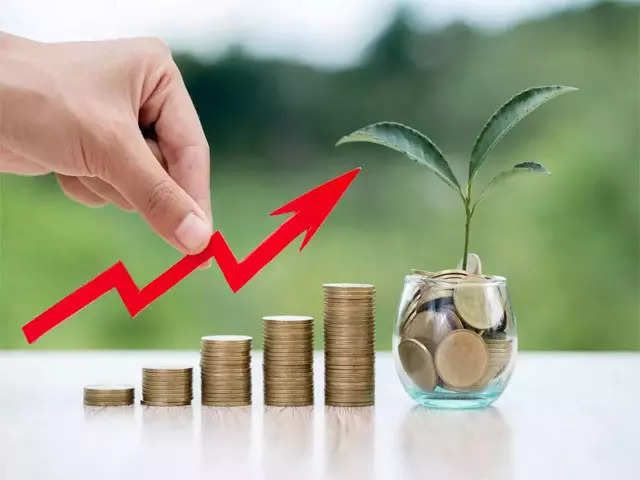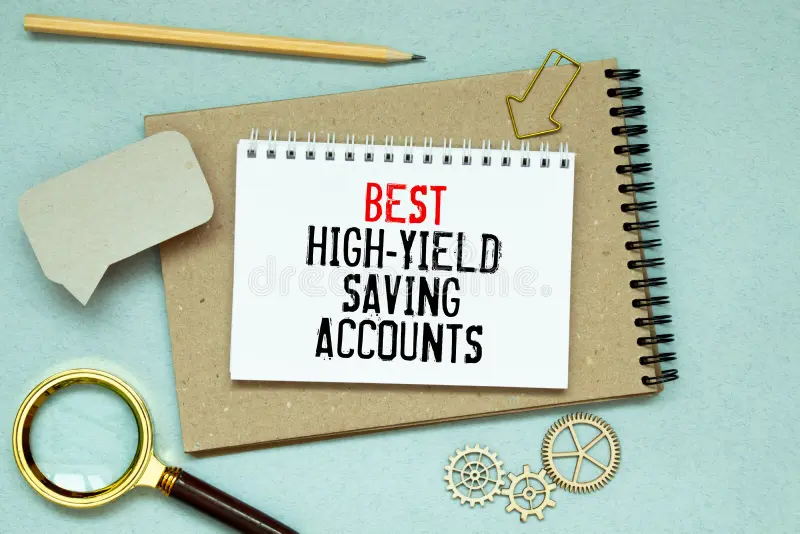5 ETFs That Could Outperform in 2025
 The world of investing can feel like a maze at times, especially with the plethora of asset options available today. However, Exchange-Traded Funds (ETFs) have emerged as a popular choice among both novice and seasoned investors due to their diversified exposure, lower fees, and tax efficiency. As we step into 2025, this article will explore five ETFs that could potentially outperform their peers, backed by trends in the economy, technological advancements, and sustainable investment practices. So grab your favorite cup of coffee, and let's delve into an exciting journey through the world of ETFs.
The world of investing can feel like a maze at times, especially with the plethora of asset options available today. However, Exchange-Traded Funds (ETFs) have emerged as a popular choice among both novice and seasoned investors due to their diversified exposure, lower fees, and tax efficiency. As we step into 2025, this article will explore five ETFs that could potentially outperform their peers, backed by trends in the economy, technological advancements, and sustainable investment practices. So grab your favorite cup of coffee, and let's delve into an exciting journey through the world of ETFs.
Understanding ETFs: A Quick Primer
Before we dive into the specifics, let’s clarify what ETFs are. An ETF is a type of investment fund that holds a collection of assets like stocks, bonds, or commodities. They trade on exchanges just like individual stocks. The benefits of ETFs include:
- Diversification: By purchasing a single ETF, you can gain exposure to a broad range of securities.
- Liquidity: ETFs can be bought and sold throughout the trading day, offering flexibility that mutual funds do not.
- Cost Effectiveness: Generally, ETFs have lower expense ratios compared to mutual funds.
If you want to learn more about how ETFs function, check out resources like Investopedia for comprehensive guides.
The Future is Clean: SPYG - SPDR S&P 500 Growth ETF Trust
As climate change continues to be a pressing global issue, businesses are increasingly looking to invest in sustainable practices. Enter the SPDR S&P 500 Growth ETF Trust (SPYG). This ETF focuses on the growth stocks within the S&P 500, making it a key contender as businesses integrate sustainability.
Why SPYG?
- Positive Growth Forecast: According to a report from the McKinsey Global Institute, companies committed to sustainability practices thrive in the long term, often leading to increased profitability.
- Diverse Holdings: SPYG includes top growth companies like Apple and Amazon, which have established solid sustainability programs. The ETF's holdings are not only trusted brands but also leaders in their respective industries.
Investors should keep an eye on SPYG, especially as ESG (Environmental, Social, and Governance) investing gains traction. For more insights, check the resources from Morningstar on ESG strategies.
Healthcare Revolution: VHT - Vanguard Health Care ETF
The healthcare sector is ripe for transformation, driven by innovative technologies, an aging population, and a growing emphasis on preventative care. The Vanguard Health Care ETF (VHT) stands out as a robust choice in this arena.
What Makes VHT Essential?
- Emerging Technologies: Companies within VHT are at the forefront of life-saving technologies and pharmaceuticals. For instance, telehealth has expanded significantly, changing how medical professionals engage with patients.
- Aging Population: According to the U.S. Census Bureau, by 2030, all baby boomers will be age 65 or older, increasing demand for healthcare services and products.
Investors could benefit from the projected growth in the healthcare sector as outlined in reports from the World Economic Forum. Investing in VHT may not just benefit your portfolio; it may also contribute to groundbreaking advancements in healthcare.
Embracing Technology: QQQ - Invesco QQQ Trust
In an ever-changing landscape, technology continues to reshape the world. The Invesco QQQ Trust (QQQ) prominently features top technology companies and has already shown remarkable growth.
The Case for QQQ
- Strong Performance History: Historically, QQQ has outperformed other indices like the S&P 500, offering investors significant returns. In fact, over the last decade, technology has contributed to almost 27% growth on average annually for QQQ investors.
- Incredible Innovations: Companies included in QQQ, such as Microsoft and Netflix, are continually pushing the envelope with innovations in artificial intelligence, digital streaming, and cloud computing.
Despite occasional downturns, such as in 2022, the long-term outlook remains bullish, especially as reported by the Nasdaq on tech-centric investments. Embracing QQQ allows investors to tap into a dynamic sector poised for future growth.
Infrastructure Boom: FIDU - Fidelity MSCI U.S. Infrastructure ETF
As the U.S. government pushes for significant infrastructure reforms, the Fidelity MSCI U.S. Infrastructure ETF (FIDU) could see substantial momentum in the coming years.
Why FIDU is Worth Watching
- Bipartisan Support: Infrastructure development is one area that has consistent bipartisan backing, offering a stable investment opportunity.
- Broad Exposure: FIDU encompasses various sectors, from utilities to construction, allowing investors to gain a diversified view of the infrastructure landscape.
The impending demand for construction and renovation of highways, bridges, and public facilities presents growth avenues for FIDU, and analysts from the American Society of Civil Engineers predict needed spending will rise dramatically. This ETF is for those looking to play a crucial role in America’s revitalization.
Clean Energy: ICLN - iShares Global Clean Energy ETF
With global climate consciousness on the rise, clean energy is no longer just an option; it’s becoming a necessity. The iShares Global Clean Energy ETF (ICLN) invests in global companies focused on renewable energy.
What Makes ICLN Stand Out
- Rising Demand for Clean Energy: As countries strive to meet their Paris Agreement goals, the clean energy sector is expected to see enormous growth. According to the International Energy Agency, renewable energy sources will dominate power generation by 2025.
- Technological Advances: From solar energy to wind power and beyond, the technology behind clean energy is rapidly evolving, making investments in this sector increasingly lucrative.
The alignment of ICLN with global trends toward sustainability and a push for cleaner alternatives makes it a compelling choice for ESG-conscious investors. For further insights into clean energy trends, refer to reports by the International Renewable Energy Agency.
FAQ Section
1. What are the advantages of investing in ETFs compared to individual stocks?
ETFs provide instant diversification, typically lower management fees, and the ability to trade throughout the day like stocks. They often track market indexes, providing a more stable investment option.
2. How can I pick the right ETF for me?
Consider your investment goals, risk tolerance, and market trends. Research different sectors and read up on the ETF’s objectives and holdings before making decisions.
3. What is the expense ratio, and why does it matter?
The expense ratio refers to the annual fee that all funds or ETFs charge their shareholders. A lower expense ratio can significantly increase your investment returns over time, making it an important factor to consider.
4. Are dividends offered by ETFs?
Yes, many ETFs offer dividend distributions based on their underlying assets. Be sure to check the ETF’s dividend yield for specifics.
5. How do I purchase ETFs?
You can buy ETFs through any brokerage account just like stocks. Many brokerages offer commission-free ETFs, making them more accessible to individual investors.
In Conclusion: Ready to Invest?
As we look ahead to 2025, these five ETFs—SPYG, VHT, QQQ, FIDU, and ICLN—hold significant promise for outperforming the competition. Each category represents sectors poised for growth, driven by innovation, demand, and societal change. As a potential investor, consider your financial desires and align them with these strategic ETF choices while keeping a close watch on market trends.
Investing is not just a numbers game; it's about aligning your financial decisions with your values and the future you envision. This journey into ETFs presents not just opportunities for returns; it entails contributing to broader social and environmental goals.
Remember to do your research, stay informed, and consult financial advisors if necessary. The future of your financial well-being could lie in the choices you make today. Happy investing!

